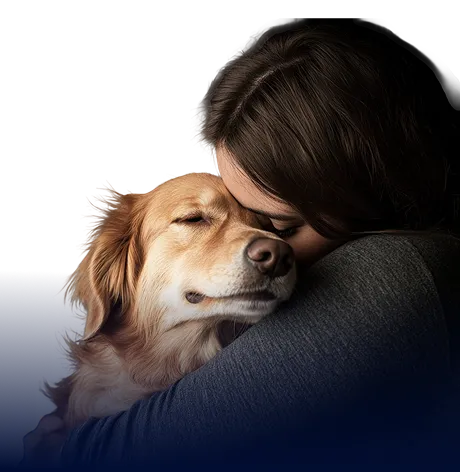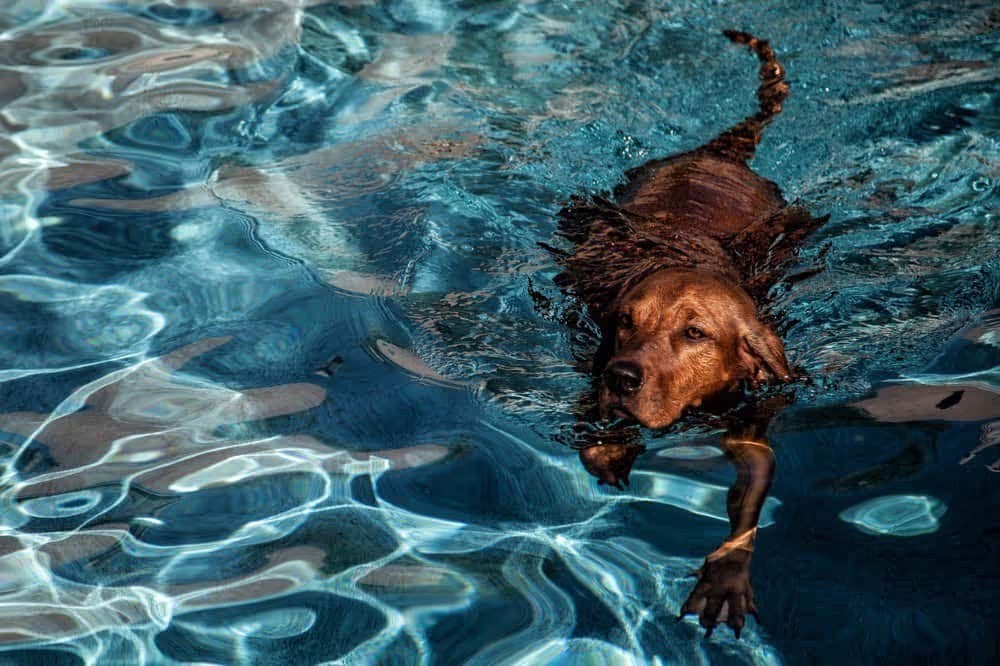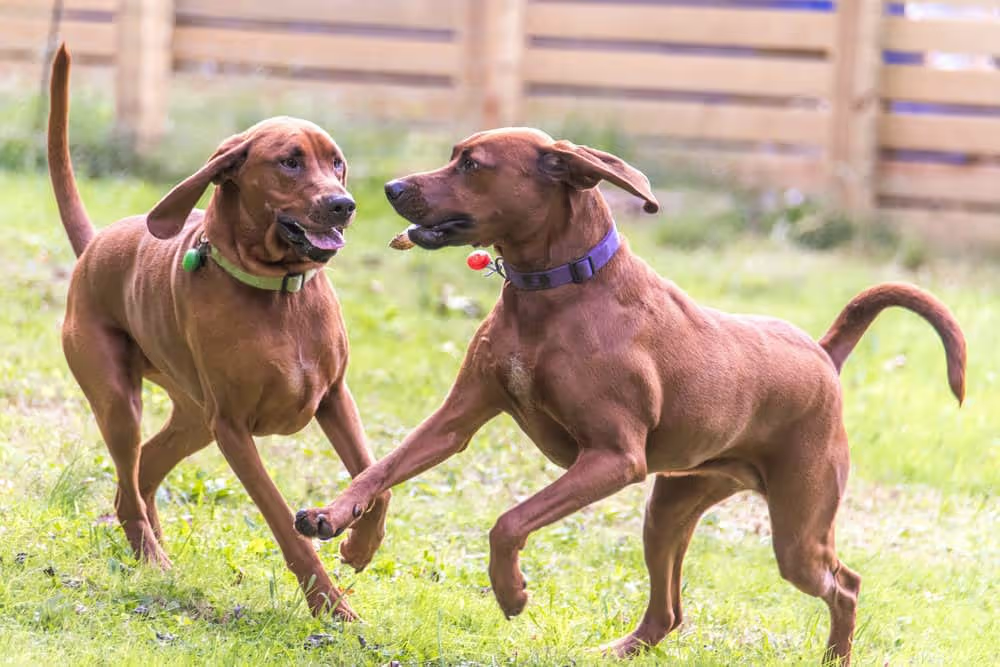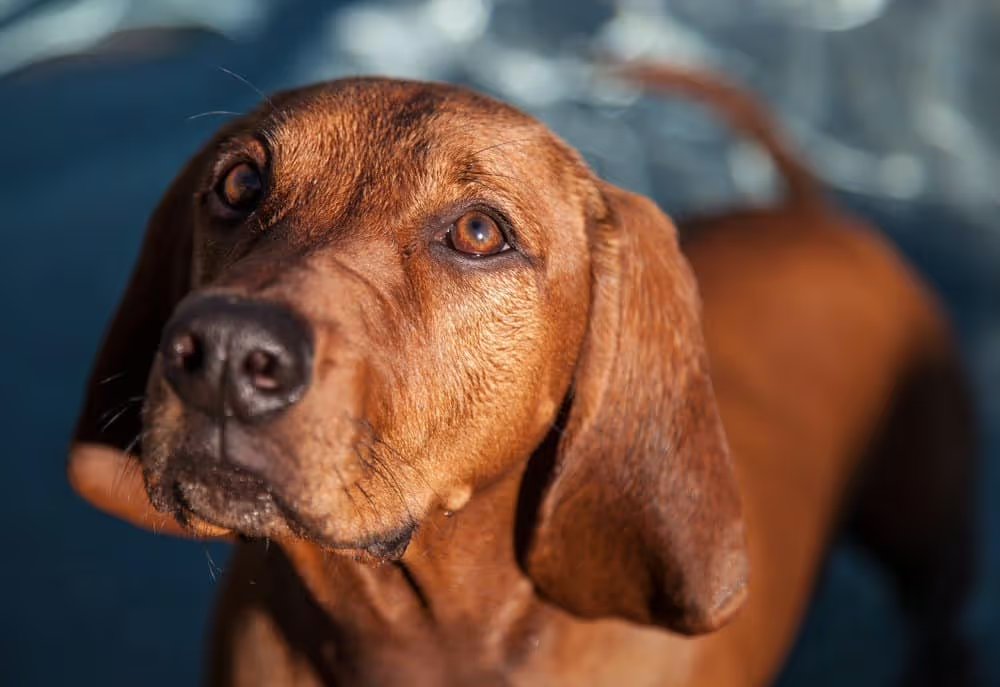For the Purrbabies


The Redbone Coonhound is a top-tier hunting dog, often admired for its sleek, mahogany coat and strong muscles.

*Methodology: Average male weight, female weight and breed size are based on calculations from our database of more than 1,000,000 pets.
👉 Coming up with a pet name can be fun but tricky. Search no further! According to PetScreening’s 2024 database, the majority of our users name their male Redbone Coonhounds Copper; Duke is the 2nd most popular male name. Meanwhile, most of our users with female Redbone Coonhounds love Bella, then Molly.

The breed is especially mellow, sweet, and down-to-earth—once their energy needs have been met. Because of their energy needs, this breed is great with kids, dogs, and people and are generally open to making new friends—both two- and four-legged. They’re highly adaptable and fit into just about any family environment as long as they get plenty of attention! Even though they’re one of the most laid-back dogs, they will get bent out of shape about one thing: being ignored by their beloved humans.
The Redbone Coonhound is an impressive breed with a distinctive appearance. According to AKC breed standards, its short coat ranges in color from a deep red to a bright chestnut. A dark muzzle and a small amount of white on the brisket and feet are permissible. We teamed up with FidoTabby Alert, and according to their database, the common coat color for the Redbone Coonhound is (77%) red.
Coonhound breeds are generally healthy, and the Redbone Coonhound is no exception. Breeders will screen for the most common conditions, but there are still a few things dog owners should be on the lookout for.
This inherited condition prevents the hip joints from properly forming and can lead to painful arthritis. It can affect any dog, including Redbone Coonhounds. Depending on the severity, your veterinarian may suggest medication, physical therapy, or surgery.
Redbone Coonhounds’ floppy ears are a breeding ground for trapped moisture and bacteria that can result in an ear infection. As a preventative, be sure to keep your dog’s ears cleaned and dried after a bath, swim, hike, or romp in the yard.
Paralysis can occur after a raccoon bite or some exposure to their saliva, although in some cases the cause is unknown. The condition is believed to be an immune system response. When this occurs, the dog’s legs rapidly stop working, and sometimes total paralysis occurs for a time. In most cases, the dog can recover over a period of weeks.
Although the Redbone Coonhound is a healthy breed, the cost of caring for a dog can add up quickly. Preventive medications like heartworm medication, vaccinations, and routine check-ups are an expense that dog owners need to plan for. In the event of hip dysplasia, the treatment cost can be a big hit. Pet health insurance may be a way to reduce out-of-pocket expenses. Pet owners who sign up their pets early will reap the greatest benefit. Alternatively, creating a pet budget or a pet savings account may benefit redbone coonhound owners.
Despite being an American breed, the Redbone Coonhound is derived from Scottish foxhounds and Irish Hounds. The Redbone Coonhound was first conceived in the southern United States when George F.L. Birdsong of Georgia became exasperated by raccoons and his hunting dog’s inability to catch them. He resolved to develop a worthy opponent that could outwit the most clever wildlife, and so the first Redbone Coonhound was born. The name is said to have originated from well-known early breeder Peter Redbone of Tennessee.
The United Kennel Club recognized the breed in the early 1900s, but Redbone Coonhounds didn’t gain recognition from the American Kennel Club until 2010.

Adopting a new puppy of any breed can be overwhelming. There are plenty of things to think about. You’ll need to choose a vet and make your first trip, plus schedule your dog’s vaccinations. Then, there’s your environment; we can help you puppy-proof your home and prepare for teething.
Although no one likes to think about losing their new dog, FidoAlert provides a free Fido ID and tag, so you’re prepared for the worst. Here are some other basics specific to the Redbone Coonhound.
Redbone Coonhounds are a high-energy breed that requires vigorous exercise. The American Kennel Club recommends one to two hours of exercise daily for these canine athletes. It’s near impossible to wear a Redbone Coonhound out, so they’ll keep going as long as you will. Redbone coonhounds are the ideal hiking companion since they can navigate any kind of terrain with ease and also make great jogging partners.
The breed doesn’t do well with extreme temperatures and is particularly susceptible to overheating. As athletic as this breed is, they also like their comforts, like air conditioning in the summer and couch snuggles and heat in the winter.
Here’s what you should know about training a Redbone Coonhound: they’re naturally independent dogs that will do what they want without proper training. Don’t let that scare you, as the breed is eager to please and, with patience, can be very well trained. Remember that training your dog is in your best interest and theirs. An adventurous Redbone Coonhound that isn’t trained to respond to their owner can easily get themselves in trouble while on the scent.
Always start training your pup as young as possible. Start with a well-exercised pup who isn’t overflowing with pent-up energy. Your Redbone Coonhound has a short attention span and will respond well to quick, focused training sessions. Prolonged training will end in your pup losing interest and a lot of frustration and difficulty for the dog owner.
Never use punishment or intimidation to train your dog. It can result in shutting down or aggression from your dog. Your redbone coonhound will respond well to treats, positive reinforcement, and praise.

Redbone Coonhounds’ short, smooth coat makes for easy upkeep and minimal grooming. Many coonhound owners will use their dogs for hunting, so an odor-neutralizing wash like this aloe oatmeal bath is often used to mask the dog’s scent. A weekly brush down with a grooming mitt will help keep shedding to a minimum while nicely distributing your dog’s skin oils. A monthly bath will be enough to keep your pup in good shape, although this adventurous dog may need a good wipe-down after a day on the trail.
Dogs of all breeds need regular dental care and nail trimming to keep them healthy. Redbone Coonhounds, in particular, will need weekly ear cleaning to prevent ear infections.
Redbone Coonhounds are a healthy breed that will likely do well on any standard canine diet. As a general rule, Redbone Coonhounds will need about 2.5 cups of food daily, split into two meals, but talk with your vet about food portioning and your dog’s specific needs. Whatever food you choose, make sure your pup is getting the nutrition they need to support their high energy and athleticism.
Not quite sure that this breed is right for you? Even if you are, it’s worth taking the time to research and consider other similar breeds. Here are a few to get you started:
They’re extremely rare outside of the United States and still a lesser-known breed in the U.S. They’re more popular among hunters, but families can expect to be asked, “what kind of dog is that?!” upon adopting a redbone.
No. Redbone Coonhounds are rarely wary of other people or animals and are unlikely to notice a guest until the doorbell rings.
Yes. They’re bred to team up with others for the hunt, so they’ll make fast friends with other animals and very rarely have any problems getting along.
Yes! These sweet, affectionate dogs love nothing more than a good couch cuddle with their humans.
Yes. They have a natural musky odor that can take a little getting used to.








